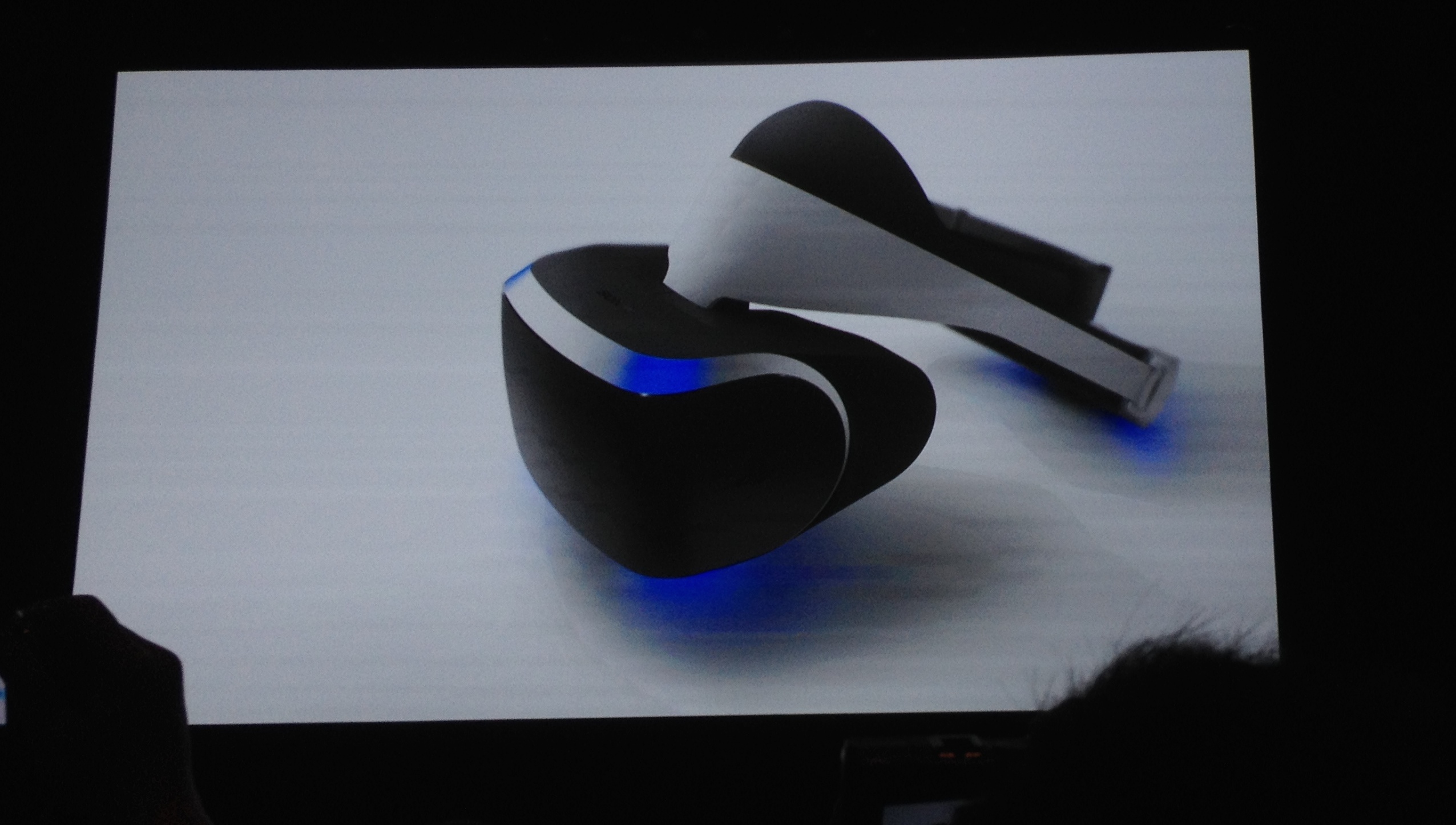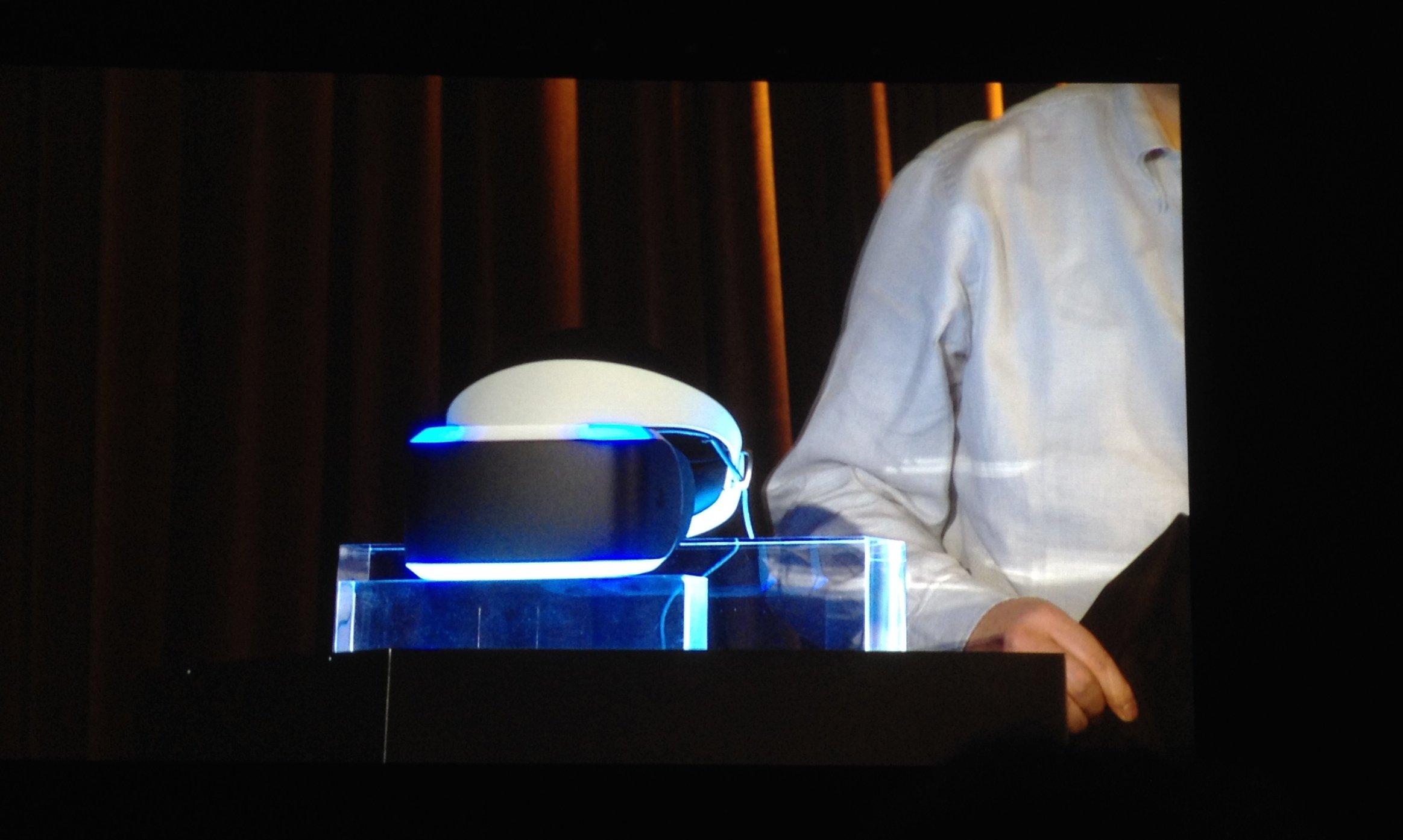At GDC, Sony's panel dubbed "Driving the Future of Innovation" was perhaps the most straightforward presentation that I can recall the company ever giving. There were no sales figures given and the amount of time that was given to past achievements was relegated to one brief slide with but a minute's attention. It wasn't necessary as all eyes were on Project Morpheus, the in-progress virtual reality system that Sony is developing for Playstation 4.
There was no spin for the temporary name, Project Morpheus. "We just came up with the name last week!" replied Shuehi Yoshida, President of Sony Computer Entertinament Worldwide Studios. Anton Mikhailov, Senior Software Engineer at SCEA R&D, also responded during the Q&A when asked about the name, adding that Morpheus "is the god of dreams, and there's a feeling that [the device's use] could be dreamlike experiences."
Shuhei Yoshida, President of Sony Computer Entertainment Worldwide Studios introduced the tech and went back to the origin, with images of early versions running in 2010. Proprietary Sony VR headsets were run with a Playstation move controller attached to the side for headtracking. Later versions included two Move controllers for more precision or three colored balls on top of the helmet. Click through our gallery above to see more images.
A brief video was shown of a "Hacked" scene from God of War III in first-person view piloted by Yoshida. Kratos' arm dashed out as he grabbed an enemy. Yoshida said the most gratifying experience was when he looked down and saw that his body "was that of Kratos. It was an empowering experience!"
Then Yoshida revealed the headset, a sleek-looking black and white head piece. According to Mikhailov, it currently runs at 1080p and has a 90-degree visual field (giving it less depth perception than the Oculus Rift) with as much attention given to audio as video. The VR system also has a newly created binaural system to make the sound track naturally.
Still, it's clear that Project Morpheus is firmly in progress. No one mentioned a release date or a price point and as a matter of fact, they outright refused to speculate.
Sony brought its VR system to GDC, Yoshida said, to get direct feedback from developers. The company was inspired by the passionate and talented Oculus Rift team, Valve, and the enthusiastic reactions of journalists and developers to other VR systems. The rest of the talk focused on why VR was an important medium and what Sony had already technically accomplished with it.
Dr. Richard Marks, Senior Director of SCEA R&D, followed Yoshida by talking about what makes VR so special in that it delivers a sense of "presence," a word that was repeated throughout the talk. It was clear that "presence" was something that meant to each of the three presenters, something more concrete than other media experiences.
Marks started by highlighting non-game applications, like a project that Sony was developing with NASA that will allow people the experience of walking next to the Mars Rover. He also suggested that we might slip on a VR headset and look around actual hotel rooms before booking.
He then highlighted the six things VR needs to be successful, showing an S-curve graph representing the adoption and development of new technology which suggested that VR was at the beginning of an innovative slope. The six necessary areas were Sight, Sound, Tracking, Control, Ease of Use, and Content.
He broke down each of these into component needs. Sony, Marks said, already had a great deal of experience in optics and screen technology, sound, PS4 control through the controller, and PlayStation Move. For tracking, he mentioned that the Playstation Camera was stereoscopic "almost like it was designed for VR," prompting a laugh from the audience. With the research going back to 2010, it's clear that VR had been a goal in PS4 development.
Marks finished by addressing developers in the room, stating that VR is "like the Wild Wild West. There's no rules for this. How often do you get to define a new medium?"
Mikhailov continued discussing "presence" and what made it work: low latency, high framerate, strong calibration, cleanly rendered images, and 3D audio. He also addressed that taking away control of a player's head motion is what caused people to become sick, adding that cinematics were generally a bad idea for this reason and might be better for a third-person VR game.
He also suggested use and development of haptic interfaces. Car peripherals like a steering wheel and pedals could make the experience more one-to-one.
Sony announced four demos that will be shown at the Playstation booth throughout rest of the conference: The Deep, from Sony's London Studio, puts players in a dive tank; The Castle from R&D; EVE Valkyrie by CCP; and a special Thief demo from Eidos will also show off Sony's VR device.
During the Q&A, Sony refused to speculate on end-specs, price, or a launch date. They did address that there were certain issues with VR, like how to best approach "locomotion" since running in place feels awkward and fake, yet there's not enough room to walk indefinitely in one direction. While not directly stated, it was implied that any loss in visual performance from rendering out the images for each eye was made up for by the immersion of the experience.
With the growing popularity of Oculus Rift, this may be a very wise move and there are reports that Microsoft may be following suit. Having tried the Rift myself, I can say that there is a much greater sense of physicality and realism to the modern VR experience than anything else I've tried in gaming.
Be sure to read about five games that would be awesome in VR.
PlayStation VR Headset GDC Panel
-
PlayStation VR Headset GDC Panel #1

-
PlayStation VR Headset GDC Panel #2

-
PlayStation VR Headset GDC Panel #3

-
PlayStation VR Headset GDC Panel #4

-
PlayStation VR Headset GDC Panel #5

-
PlayStation VR Headset GDC Panel #6

-
PlayStation VR Headset GDC Panel #7

-
PlayStation VR Headset GDC Panel #8

-
PlayStation VR Headset GDC Panel #9

-
PlayStation VR Headset GDC Panel #10

-
PlayStation VR Headset GDC Panel #11

-
PlayStation VR Headset GDC Panel #12

-
PlayStation VR Headset GDC Panel #13










